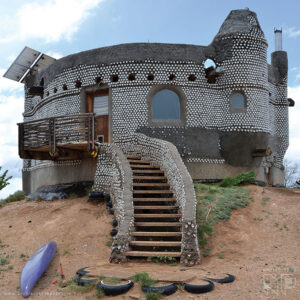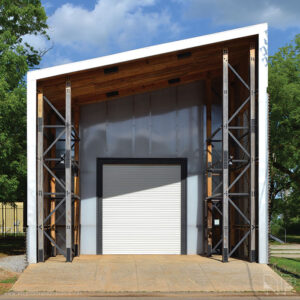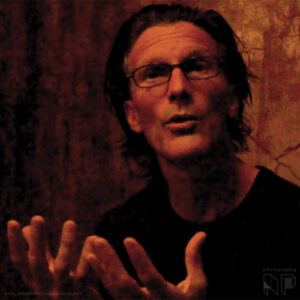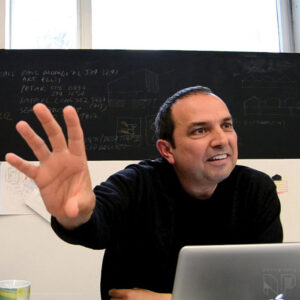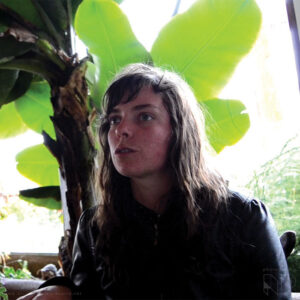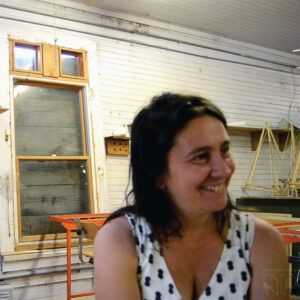DISCOVERING CONTEMPORARY ARCHITECTURE IN THE SOUTH OF THE UNITED STATES
by Alessandro Zorzetto and Francesca Modolo
“I decided I had enough. I closed the office, bought a motorcycle, and went into the desert to work with the people on their ideas and dreams”
Nader Khalili, 2005
The idea of a trip to the southern United States arose from general considerations on the emergencies that are experienced daily in the world today: climate upheaval, economic crises and poverty. It is precisely in the nation that invented the great corporate architecture and the star-system that a series of movements have developed that support an alternative architecture based on degrowth.
This is an architecture that does not base its philosophy on the formal appearance of buildings or the laws of the market, but is based on basic principles that have been profoundly re-evaluated in recent years: sustainability, environmental impact, energy self-sufficiency, self-building, participatory design, social ethics.
The journey is an itinerary in stages, passing through the various stages of development of this architecture, which accompanies the architect from his university studies to freelance work. It is a coast-to-coast journey along an imaginary curve that runs through the southern part of the country, through areas that are disadvantaged for economic, climatic, political and geographical reasons.
During the trip, numerous testimonies were collected on current methodologies and experiences, but also on dreams and aspirations for the future. The result of this investigation is summarised in a short documentary in which the protagonists animating these architectural movements are interviewed.
Below are four excerpts from the interviews, to involve the reader emotionally and to provide a more topical vision of this world than ever before.
California Institute Of Earth Art And Architecture [Cal-Earth]
Interview with Ian Lodge, April 30, 2012 – h. 9.30 pm – Hesperia, California.
“Cal-Earth is the work of architect Nader Khalili, and it’s an effort to find housing solutions for the poor and homeless. Basically the Cal-Earth Institute is an educational center, and in one week we can teach someone how to build their own home.
“About Europe and other countries: one of the reasons we are founding Cal-Earth Spain is because we would like this kind of work to spread to Europe, so I hope people can sign up and attend a workshop.
“I feel like we’re no longer on the margin, I feel like we’re about to be really accepted into the mainstream, and that’s happening at the same time, because the social structures based on the Oil Age are collapsing, the financial structures are collapsing, the ecosystems are collapsing. So I think those things are happening at the same time as Cal-Earth and other sustainable solutions at the right time.”
Estudio Teddy Cruz
Interview with Teddy Cruz, May 01, 2012 – h. 2.30 pm – La Jolla, California.
“In fact, the practice, this process that we have opened up, has to be told from the point of view of this specific geography, which is a geography of conflict, in this border between Mexico and the United States, but which is also in some ways a much larger border, between Latin America and the United States.
“I’m very interested in this idea of comparing the urbanization of consumption, which is the global city in recent years, and the urbanization of cultural, social and economic production: so many neighborhoods, so many marginal communities around the world have remained centers of cultural production. I’m very interested in amplifying these places as a new frontier from which to build a new urban policy.
“The idea of developing these projects is not considering these people as clients, but as collaborators, to include their economic, social and political activity, and make an architectural and programmatic composition that can build a sustainable project.”
Earthship Biotecture
Interview with Jessica Gaddis, May 07, 2012 – h. 1.00 pm – Taos, New Mexico
“Earthship is a sustainable housing system, made from recycled materials, and completely off-grid (independent of utility grids): it generates its own electricity, its own water, contains treated wastewater only at its site, and no auxiliary heating or cooling system is needed, as the building itself generates its own comfortable living space. The heart of an Earthship is trash, really: hopefully people who come here will build walls out of only cans and bottles when they return home, if only for their own backyards.
“A lot of people on our team are building their own homes for $5,000, $10,000, $15,000 U.S. dollars,” he says.
“We are a for-profit company, however, we have also done relief work in disaster areas-Haiti, the Andaman Islands, Sierra Leone in Africa. I think a lot of people in the company want to see this kind of evolution: building very simple, affordable homes for everyone. I’d really like to see a lot more simple survival module types, which is the basic model of living that the average person can afford.”
Rural Studio
Interview with Elena Barthel, May 10, 2012 – h. 3.00 pm – Newbern, Alabama
“I think Rural Studio is a very special architecture school mainly because we give architecture students the opportunity to move to a small rural area to design and build buildings that can be private homes or public buildings. All the projects are real, so I think the combination of design, construction, and social involvement of the students makes it a very special educational process.
“Our students are very skilled because they know how to design a detail, but they also know how to implement it,” he said.
“Our relationship with clients is a true partnership. We work together, so we figure out together what is the best way forward at all stages, and it is never predefined, but it changes and evolves during the process. The advantage is that we can do it together.
“Perhaps the recipe for starting such a process in Italy is: universities, clients, local authorities, and consultants. This is so that it works in the long term. Our goal is longevity, in each of our projects.”
visit the exhibition link
view the catalog link



